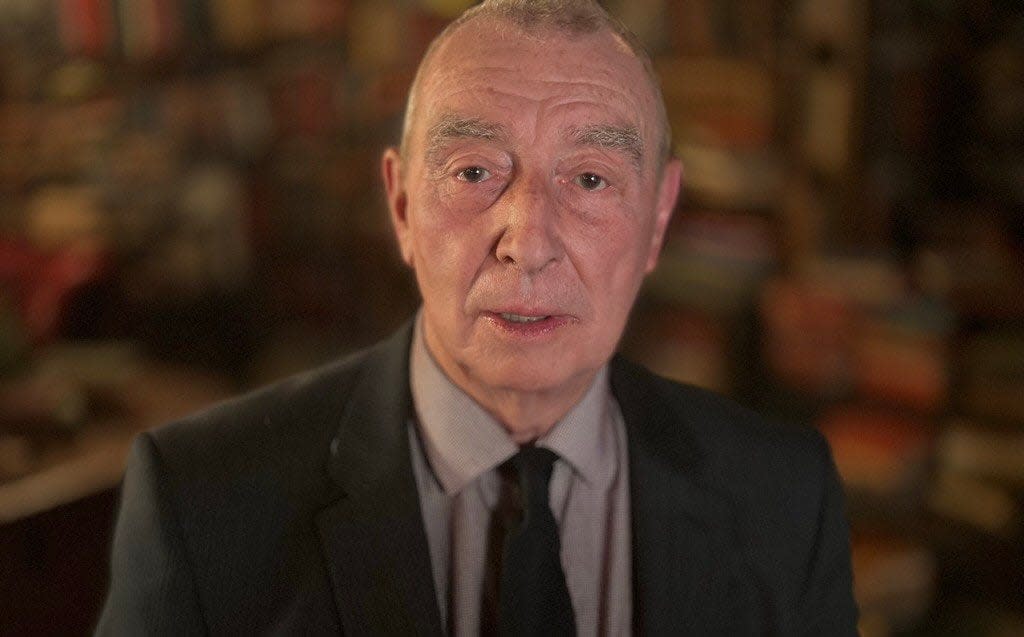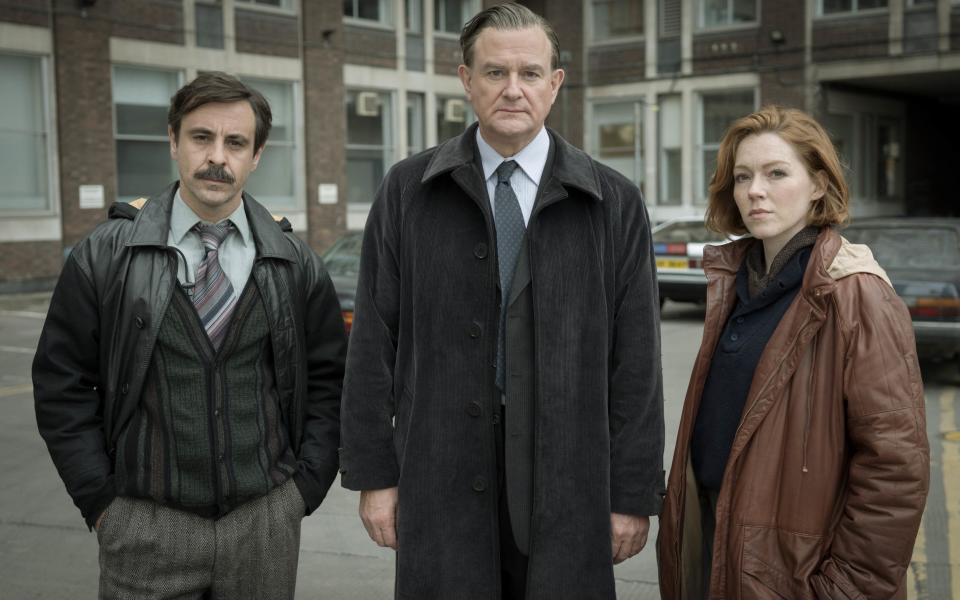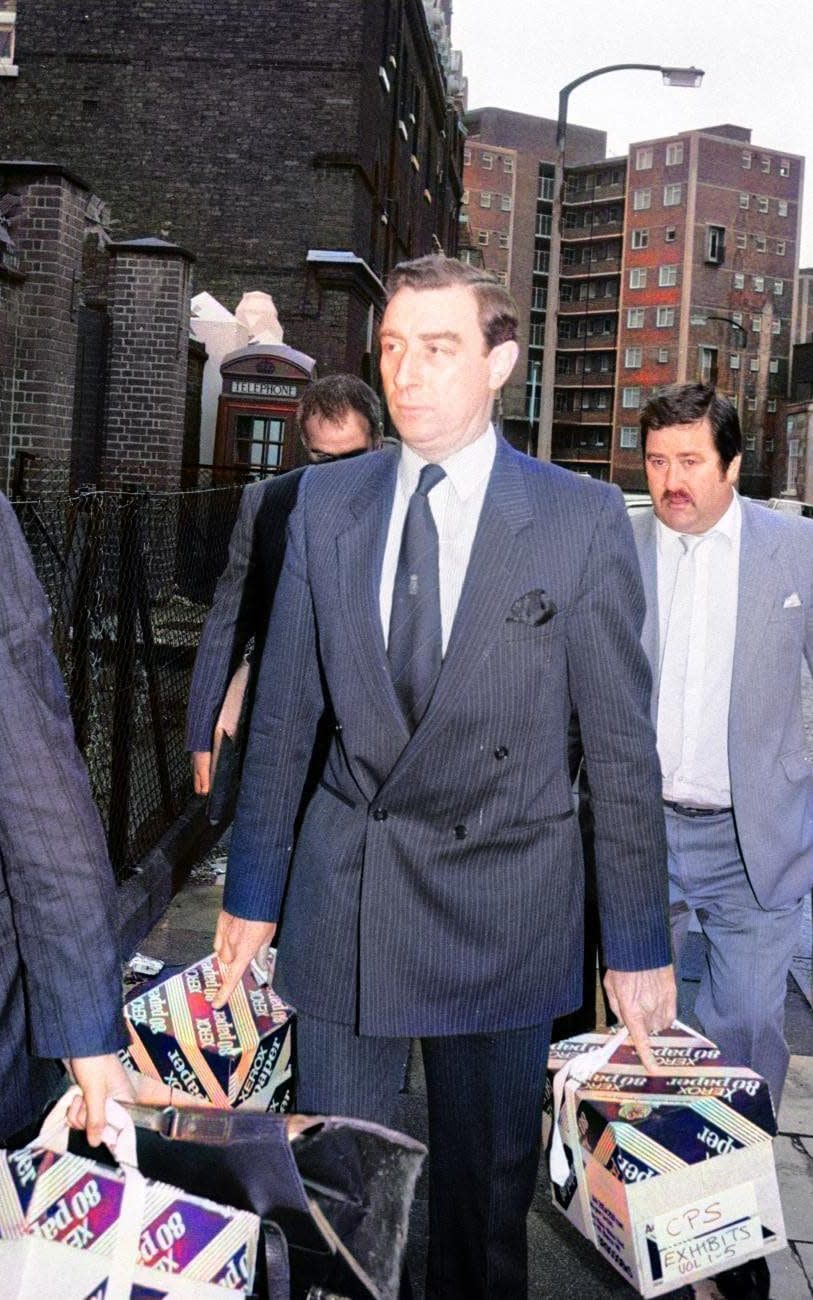‘Kenneth Noye offered me a bribe – I told him he was wasting his time’

The first time Brian Boyce faced Kenneth Noye was at Bromley police station in January 1985. Noye had just been arrested for his part in the handling of the Brink’s-Mat gold – the £26 million worth of bullion, diamonds and cash stolen from a warehouse in Heathrow two years earlier, and the subject of the BBC One drama The Gold – and for killing undercover officer DC John Fordham.
It was dangerous and highly risky for Boyce (played in the drama by Hugh Bonneville), the senior officer in the inquiry, to see Noye (Jack Lowden) alone. But after he had been formally charged with the murder of Fordham, a member of Boyce’s surveillance team, and the handling of the gold, Noye requested a one-to-one.
Boyce, who is now 85, says he suspected that Noye wanted to cut a deal. As Boyce walked into the room, Noye offered his hand – it was the handshake of a Freemason, which Boyce most definitely was not.
As it was, Noye didn’t just want a deal, he wanted to offer a bribe. Noye could, Boyce recalls him saying, “make sure I had ‘a good retirement’ and would put £1 million into a bank anywhere in the world, where no one would trace it, if I made sure he did not go to prison. I told him he was wasting his time.”

The moment he left the room, Boyce wrote down everything that had happened and reported it at the earliest opportunity. “I didn’t want any doubt on my intentions,” he says. “My fear was that if an attempt was being made on me, who else could be bribed? The robbery had unleashed vast amounts of money into the underworld – £26 million can buy a lot of favours. A lot of silence.”
Boyce has scarcely spoken about his role in the investigation. Now, after the completion of the drama, he has taken part in The Gold: The Inside Story, a BBC One documentary that speaks to the real people involved.
That meeting with Noye came weeks after 47-year-old Boyce had been promoted to detective chief superintendent in the Met and asked to lead the Brink’s-Mat investigation.
An inside man, security guard Tony Black, had helped the gang plan the raid. He was soon arrested and his evidence helped convict two of the six robbers, Micky McAvoy and Brian Robinson, but when Boyce took over, “not a speck of the gold had been recovered”. The following four years would prove to be, by far, the hardest of his 30 years in service.
Legend has it that the robbers never expected to find such a quantity of gold. “I don’t know if this is true or not,” Boyce says. “What I did know is that 6,800 bars of stolen gold bullion had to be turned into cash. And to do that, the robbers needed help.”
Surveillance revealed that there was a real possibility that the gold was being collected from Noye and moved to the West Country, where it ended up at a scruffy-looking small-time gold dealer above a carpet shop in Bristol.
“We had not seen any gold – just a series of heavy briefcases being transported from Noye’s house. Was the gold being kept somewhere within the acres of Noye’s land? I felt that it could be,” Boyce says.

He set up surveillance around and inside Noye’s property, in the hope of seeing the gold being handed over. This was his intention, assuming that all went to plan. But Boyce, a former soldier, kept an old military adage in mind: “No plan survives contact with the enemy.”
Boyce also brought in an eight-man Special Surveillance Group, including DC John Fordham. “John was highly experienced and trained to get as close as possible to the target, staying deeply hidden for hours, if not days at a time,” he says.
On the first night of the operation, Boyce was driving towards Noye’s home when he heard on police radio that Fordham had entered the grounds. A few minutes later, Boyce recalls hearing, “John compromised, John compromised.”
When he arrived at Noye’s, “it was a scene of chaos. John Fordham had suffered 10 stab wounds and I gave the order to arrest Noye.”
Fordham’s partner, Neil Murphy, had retreated, but for whatever reason, Fordham had not left the grounds after the dogs started barking, alerting his presence to Noye, who came out to search his garden armed with a kitchen knife. Fordham died later that evening. This was now a murder inquiry. “A police officer, a beloved husband and father had been killed under my orders doing his duty,” Boyce says today.
Boyce and his team had to find gold or other evidence connecting Noye to the Brink’s-Mat robbery. Initially the searches at Noye’s didn’t uncover much.
“All we found was a copy of Shirley Bassey’s Goldfinger on his record player, a 1985 edition of the Guinness Book of Records with an entry about the Brink’s-Mat robbery circled in pencil, a bag of copper coins possibly used to mix with gold bullion to camouflage its origin, and a picture of a gold bar. Hardly enough to charge him with receiving £26 million of gold bullion.”
That night, as Boyce climbed into his office camp bed at Scotland Yard, the phone rang. He was told that 11 bars of melted gold had been found within yards of where Fordham had been stabbed. There were no identifying marks, though, and he now faced the task of proving this was part of the Brink’s-Mat haul.
November 1985 brought the murder trial at the Old Bailey. Noye pleaded self-defence, Fordham was in his grounds wearing a balaclava, and he feared for his life. The jury believed him and found him not guilty.
“I was extremely disappointed,” Boyce says. “Many of the officers who had been involved right from the start were, to put it bluntly, gutted.”
The next day Boyce objected to the bail of Noye on the basis that he still faced a trial over handling the stolen bullion from the 11 gold bars discovered at his property. Noye remained in custody. “I think that helped a little. But events had taken a lot out of me. When I arrived home in Bromley I was dejected, but certainly I was nowhere near yielding.”
As a young detective, he learnt a lot about resilience from Leonard “Nipper” Read, who investigated the Krays, and who was his boss when Boyce was one of the arresting officers of Reggie Kray.
On May 8, 1968, when Boyce put Kray into the back of a police car, the gangster turned to him and said, “I’ll be out by noon.” The comment told Boyce that Kray was confident of being released because of corrupt contacts in the police. “But in fact, the Krays never did come out. Our case against them was overwhelming,” he says.
More than 17 years later, Boyce was grateful that Nipper had taken the trouble to ring him after Noye was found not guilty. He said, “Brian, keep it up. Remember I lost the first Kray trial. Good on you. Keep going.” Those, Boyce says now, “were some of the best words I had ever heard in my professional life”.

Just before Noye’s handling trial, Boyce was called into No 10 to meet policy advisers. He was told Margaret Thatcher had taken an interest in Brink’s-Mat. At the time, money laundering was only considered a crime if it was connected to terrorism, not serious criminal activity. Downing Street recognised a need to change the law.
In future, banks and solicitors, who had drawn much criticism in the Brink’s-Mat case, would be instructed to inform police of suspicious large-scale cash deposits. “But because these laws could not be applied retrospectively, it was far too late for us on the Brink’s inquiry,” Boyce laments.
Still, he got his man. Noye was sentenced to 14 years’ imprisonment, of which he served eight years in custody. He was on licence from that sentence when he murdered Stephen Cameron in a road rage incident in 1996. Having been sentenced to life imprisonment, he was released in 2019. He is on licence for life.
Noye’s Brink’s-Mat handling trial in 1985 was, Boyce says, with typical understatement, “a tense time”. When Noye was convicted of handling the stolen bullion and avoiding VAT, he turned and screamed at the jury: “I hope you all die of cancer.”
Boyce, who was in court that day, remembers it well. “Anybody who had wondered what type of man could stab another, who was unarmed, 10 times and claim ‘self-defence’ had in that outburst their answer.”
Todd Austin is director of The Gold: The Inside Story, which screens on Monday on BBC One at 9pm


